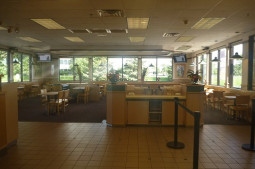<<< back< prevnext >

Article:
Restaurant Sales Levels Can Support Over-Assessment Arguments

We frequently run into appraisal situations where a restaurant or banquet hall appears to be over-assessed but there may be limited market data available to prove it. While the Assessor may pick up on the more expensive build-out typical of a restaurant facility, they may overlook less obvious obsolescence issues. Similarly, in an income approach, the Assessor may spot the high lease rate, but if the rent turns out to be more than the restaurant can afford to pay, the value of the real estate would be overstated.
As property tax appraisers we have a strong bias toward measuring building value or fair rental value based upon comparable building sales or comparable rental data. We also generally make a point of trying to exclude any business value from our valuations. Restaurateurs, however, who are the actual market participants, typically rely on sales to rent ratios, not rental comparables, to establish fair rent.
A Baker Tilly Restaurant Benchmark Study indicates that NET rents at no more than 6% of gross sales (exclusive of CAM, Insurance and Taxes) are generally necessary to insure restaurant viability. On a gross basis (including CAM, Insurance and Taxes) the figure is about 10%. Given that we are in one of the highest property tax areas of the country the gross basis calculation would probably be the better indicator.
So a restaurant with $1,000,000 in sales can't realistically pay more than $60,000 per year on a net basis or $100,000 per year on a gross basis. These restaurant affordability standards are relatively solid since restaurants have such low margins (2-6% of sales pre-tax). Food generally costs about 1/3 of total restaurant sales and labor costs another 1/3. This doesn't leave much room to cover other expenses and remain viable. Restaurants with over $1,000,000 to $1,500,000 in sales can generally afford a little more rent but if sales are lower they can afford a little less.
If there were two identical freestanding restaurants on a pad in front of a shopping center with one occupied by McDonald's at $1,500,000 in sales and the other occupied by Al's hot dogs that has $750,000 in sales the implied rents would be very different. The surplus rent for the McDonald's space would be attributable to a "value in use" while Al's hot dogs implied rent would more closely reflect a "fee simple" value.
The actual sales of a restaurant (particularly a mom & pop restaurant) can provide a supportable basis for establishing market level "fee simple" rents. While there are certainly other factors involved, restaurant sales can help reflect some of the obsolescence issues attributable to property location or design factors that regular building rental comparables cannot. There may be cases when a restaurant signed a high lease that the Assessor picks up on but whose sales expectations were not met and they cannot support this "above market rent". This methodology can support a market level rent for owner occupied spaces who are struggling with lower rental rates than what would typically be expected based upon conventional building comparable market data.
Fun Fact: Law firms average 4.48% for rent expenses relative to sales on a net basis (excluding taxes, CAM and Insurance).
As property tax appraisers we have a strong bias toward measuring building value or fair rental value based upon comparable building sales or comparable rental data. We also generally make a point of trying to exclude any business value from our valuations. Restaurateurs, however, who are the actual market participants, typically rely on sales to rent ratios, not rental comparables, to establish fair rent.
A Baker Tilly Restaurant Benchmark Study indicates that NET rents at no more than 6% of gross sales (exclusive of CAM, Insurance and Taxes) are generally necessary to insure restaurant viability. On a gross basis (including CAM, Insurance and Taxes) the figure is about 10%. Given that we are in one of the highest property tax areas of the country the gross basis calculation would probably be the better indicator.
So a restaurant with $1,000,000 in sales can't realistically pay more than $60,000 per year on a net basis or $100,000 per year on a gross basis. These restaurant affordability standards are relatively solid since restaurants have such low margins (2-6% of sales pre-tax). Food generally costs about 1/3 of total restaurant sales and labor costs another 1/3. This doesn't leave much room to cover other expenses and remain viable. Restaurants with over $1,000,000 to $1,500,000 in sales can generally afford a little more rent but if sales are lower they can afford a little less.
If there were two identical freestanding restaurants on a pad in front of a shopping center with one occupied by McDonald's at $1,500,000 in sales and the other occupied by Al's hot dogs that has $750,000 in sales the implied rents would be very different. The surplus rent for the McDonald's space would be attributable to a "value in use" while Al's hot dogs implied rent would more closely reflect a "fee simple" value.
The actual sales of a restaurant (particularly a mom & pop restaurant) can provide a supportable basis for establishing market level "fee simple" rents. While there are certainly other factors involved, restaurant sales can help reflect some of the obsolescence issues attributable to property location or design factors that regular building rental comparables cannot. There may be cases when a restaurant signed a high lease that the Assessor picks up on but whose sales expectations were not met and they cannot support this "above market rent". This methodology can support a market level rent for owner occupied spaces who are struggling with lower rental rates than what would typically be expected based upon conventional building comparable market data.
Fun Fact: Law firms average 4.48% for rent expenses relative to sales on a net basis (excluding taxes, CAM and Insurance).



